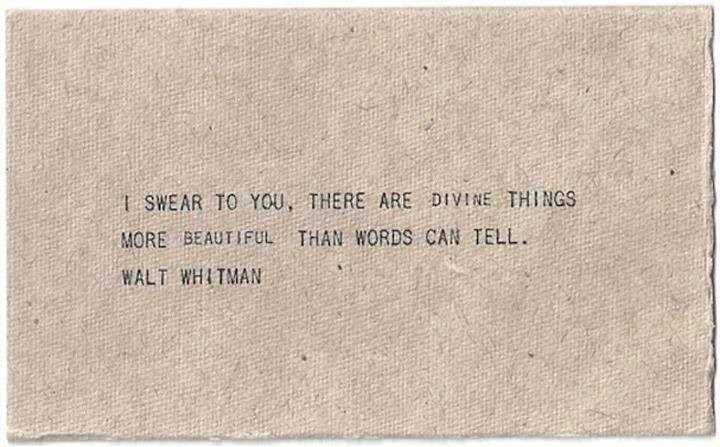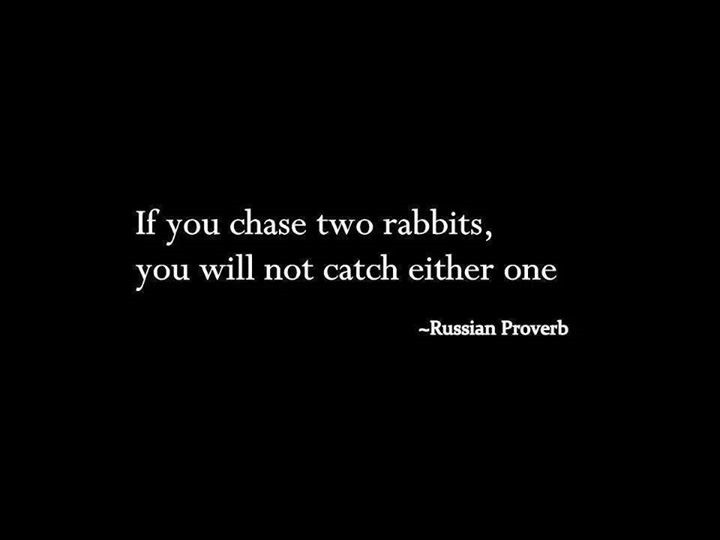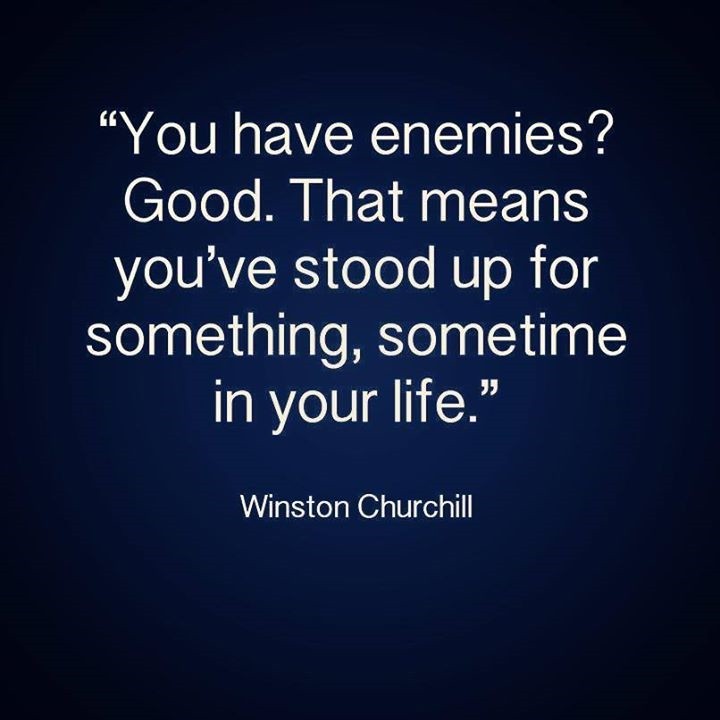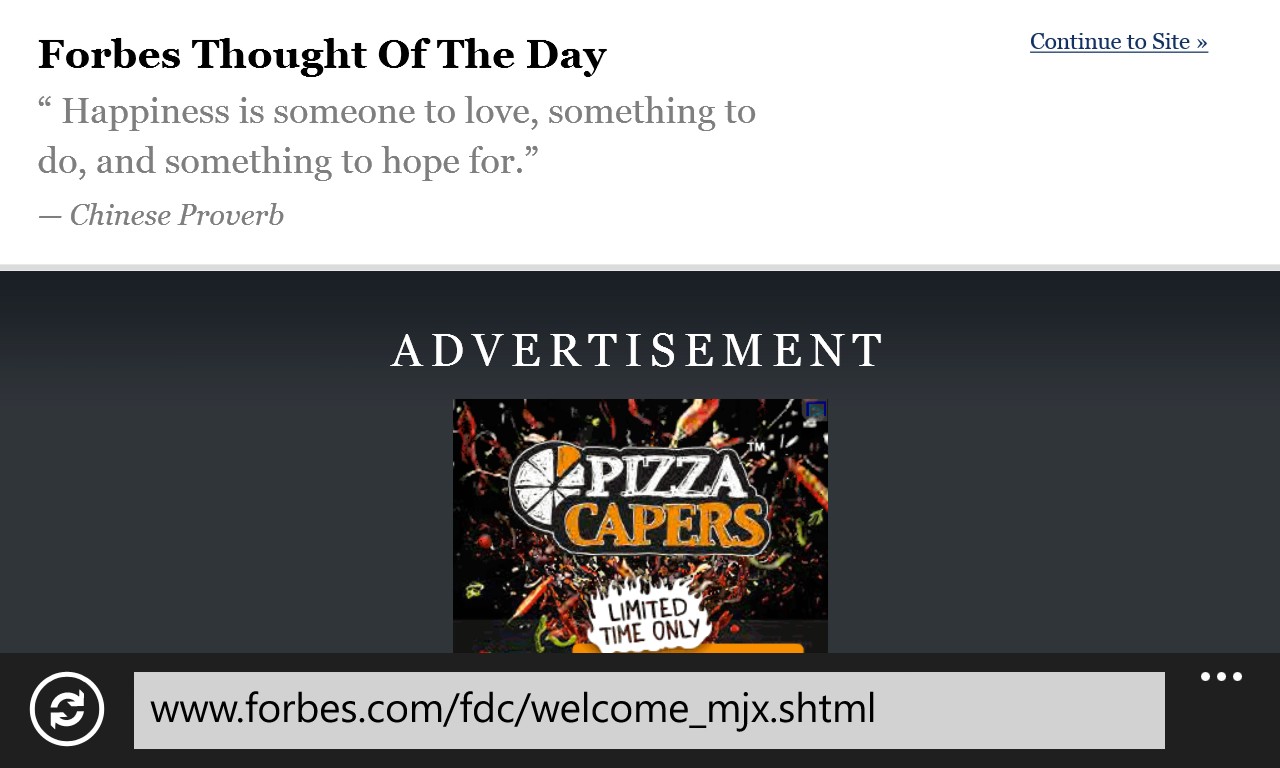https://www.youtube.com/watch?v=qHQWlFtSptU
Whitman: I swear to you, there are divine things more beautiful than words can tell
Russian Rabbits
AMA rejects price transparency
AMA at its best (worst).
It doesn’t want price transparency because its too hard to predict how much things should cost charging by the hour instead of by the procedure.
I’d want to know more about my surgeon than my dishwasher when making a purchasing decision.
So lets put up all those metrics and allow people to compare what matters.
http://www.smh.com.au/federal-politics/political-news/ama-rejects-call-for-more-fee-disclosure-20140729-3cs2y.html#ixzz396F0w0H6
AMA rejects call for more fee disclosure
AMA president Brian Owler at the National Press Club in Canberra on Wednesday. Photo: Alex Ellinghausen
The Australian Medical Association has rejected calls for greater transparency on surgical fees, saying it was not possible for patients to compare prices for operations in the same way they might shop around for a dishwasher.
Appearing at a Senate hearing on Tuesday, AMA president Brian Owler, who is a neurosurgeon, said his organisation did not support the charging of excessive fees, but said the appropriate fee for a procedure depended on the patient’s condition.
”It is not possible to put up on a website all of our fees … and be able to go, like you’re buying a dishwasher, and be able to work out which doctor you’re going to on the basis of the fee that they charge,” Associate Professor Owler said.
”The experience and qualifications of many of the doctors will vary, their practices will vary, and really you need to see a patient to understand what their problem is, then formulate with that patient the best plan of management.”
Professor Owler’s comments follow a statement from the Australasian College of Surgeons in which it expressed concern about some surgeons, including some of its own members, charging ”extortionate” fees.
The president of the college, Michael Grigg, said it was working with the Australian Competition and Consumer Commission on ways to allow greater disclosure of surgeons’ fees without breaching competition rules.
Prominent neurosurgeon Charlie Teo said there were some surgeons who abused the ignorance of their patients.
But he said the recommended fee for some procedures, such as the approximately $2500 fee for the removal of a brain tumour, undervalued the work involved in complex cases.
”I can be operating on the world’s most difficult brain tumour and it takes eight to 10 hours and I still get paid $2500. Versus a plastic surgeon who charges $8000 to $12,000 for a breast augmentation,” Dr Teo said.
Dr Teo recommended Australia adopt a the American Medical Association’s ”22 Modifier” policy, which requires surgeons to supply evidence that the service provided was substantially greater than the work typically required for a certain procedure if they charged higher fees.
Greens senator Richard Di Natale, who initiated the Senate inquiry into out-of-pocket health costs, said patients needed greater transparency on costs.
”At the moment, the problem is that people become aware of the out-of-pocket costs when it’s too late, when they’re well advanced down the treatment pathway, and often there’s no way of turning back.”
The president of the Australian Society of Plastic Surgeons, Tony Kane, said its members were required to make a full written disclosure to patients of what the cost of their treatment would be, including the possibility of further costs, should revision surgery be necessary.
Dr Kane said members were required to make this disclosure at a sufficiently early stage to enable patients to take cost considerations into account when deciding whether to undergo the treatment.
Media redux
Media world ‘in chaos’ as journalism, publishing and agencies face grim future, according to US commentator
 The future of traditional journalism, particularly at a regional level, is “fucked”, as are legacy publishers and even agencies, with all becoming obsolete in the digital age, according to a media commentator.
The future of traditional journalism, particularly at a regional level, is “fucked”, as are legacy publishers and even agencies, with all becoming obsolete in the digital age, according to a media commentator.
Veteran US journalist Bob Garfield painted a picture of near-armageddon with out of work journalists, a defunct advertising model and agencies who are no longer relevant.
He also had strong words for creatives who “like to give trophies to one another for their creative genius and parade like Tony the Tiger down Madison Avenue every Fall during ad week,” warning “if they think people love their ads they are sorely, tragically mistaken”.
Speaking at the Association of Data Driven Marketing and Advertising (ADMA) conference in Sydney yesterday, Garfield, a columnist for Media Post, said the Internet has spawned “billions of journalists on the ground and camera phones in hand in search of a story”.
“I represent the last generation of journalists whose vocation was a handsome livelihood,” he told delegates.
Asked about the future for a 30-something journalist, he said: “You are fucked,” adding that a journalist friend with years of experience now waters plants in offices for a living.
“Many say we are in the golden age of content. Which is true unless you want to discuss journalism, particularly local journalism which has suffered greatly at the hands of digital chaos,” he said. “Except for search, gaming and porn, nobody is making mony of any consequence online.
“As audiences fragment the amount of revenue coming in for any particular piece of content goes down eventually to the point when the publisher or broadcaster can no longer afford to produce the thing.
“So if you were looking forward to a great career in media and marketing it might be a good idea to remove your belt and shoelaces.
“This isn’t about digital verses legacy it’s about the growing obsolescence of the advertising supported media model.”
While accepting that “more choice is wonderful”, Garfield warned that the impending demise of the large media companies and proliferation of amateur journalists will lead to a splintered industry and reduction in quality reporting.
“What will be lost is critical mass, the ability for anyone to have a strong enough voice to make a difference amid all the deafening noise of the crowd,” he said.
Traditional media organisation commanded the attention of, and held to account, governments, industry and other institutions, he continued.
“We can have a separate discussion about how responsible and intrepid the media were with this power, but that power was undeniable,” he said. “In general, those organisations attracted the best talent with the most professionalism and the greatest access. In a word, they had clout and professionalism mattered.
“We didn’t offer perfection but we came with a frame of reference.”
Overall, the newspaper industry is “tragically circling the drain”, with asset values decimated, profit margins eradicated and print subscriptions plummeting.
“The result has been vastly diminished journalism, and increasingly desperate measures by publishers such as so-called native advertising, which we can discuss later provided you want to talk about prostitution,” he said.
Garfield said the traditional advertising model has fallen apart in such a fragmented, digital market, while viewers fast forward through adverts like never before.
“Why do they they skip past the commercials? For the same reason he puts spam filters on his computer and refuses to click on any banner ad ever for any reason at any time,” he said. “Advertising people like to give trophies to one another for their creative genius and parade like Tony the Tiger down Madison Avenue every Fall during ad week. But if they think people love their ads they are sorely, tragically mistaken.
“For more than three centuries consumers have put up with ads. Some ads are funny and clever and some even worm their way into our heads and popular culture. But they are and have always been a nuisance. To most people all advertising is spam. The proof being that the moment technology afforded us the ability to skip them, skip them we have.”
He said the “next bloodbath will be in TV”.
Agencies did not escape the gloomy outlook with Garfield predicting they will become obsolete in such a changing media landscape.
“The agency business is toast because no matter what anyone tells you, it derives its income from creating and placing large ad campaigns . The larger the more lucrative but mass is going away and the agency business does not adapt to micro.
“The entire media universe is in chaos.”
Steve Jones
Churchill: You have enemies? Good
Too many numbers…
Thanks Flowing Data…
Numbers is a short film by Robert Hloz where some people see numbers appear above others’ heads. What the numbers are varies by the person with the ability, and it turns out knowing can be a blessing and a curse. Worth your nine and a half minutes of undivided attention:
Amazing Saucepans
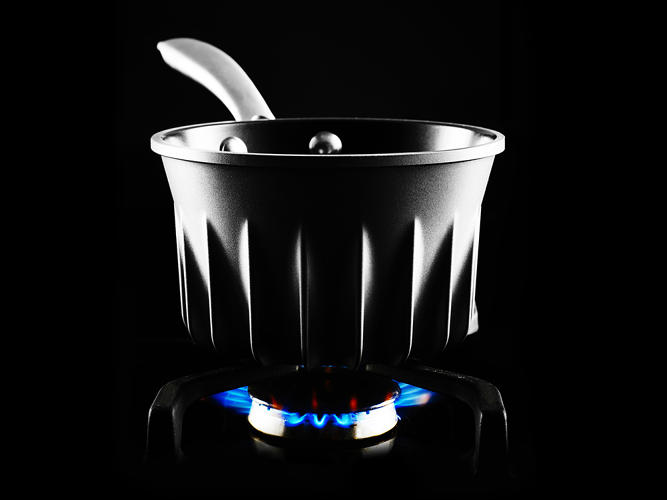
http://www.fastcoexist.com/3033435/a-rocket-scientist-designed-a-saucepan-that-boils-water-so-fast-you-can-watch-it
Rocket Scientist Designed A Saucepan That Boils Water So Fast, You Can Watch It
They say a watched pot never boils. But you’ve never watched a pot like this. Sit back and enjoy the show.
Thomas Povey‘s day job usually involves designing jet engines, not kitchen gadgets. But when the Oxford University engineering professor was on a camping trip, he started thinking about how to make a pot that could boil water faster. A few years later, the idea has morphed into a series of ultra-efficient indoor pans that save energy and time on gas stoves.
At first, Povey was thinking only about the camping market. “At high altitude, it takes absolutely forever to boil water, so improving the efficiency of heat transfer to the pan makes a big difference,” he says. By chance, other engineers were working on similar designs for camping at the same time, so he shifted his focus to the kitchen instead.
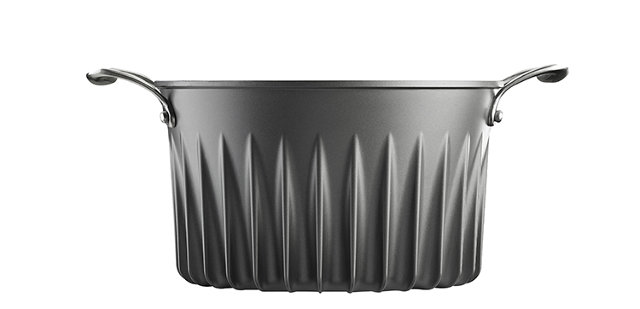
For many people, the most obvious draw of the pots and pans might be the fact that you can cook much faster with them–in tests, water came to a boil 3.3 minutes faster than in a normal pot. But the energy savings are also large.
“A conventional pan of the same size uses 44% more gas,” explains Povey. “This is quite a significant saving, but also gets people thinking about energy consumption with a product that is very visibly consuming energy–unlike the invisible energy of most of appliances like dishwashers and fridges.”
The design uses patented fins to pull heat across the bottom of the pan and up the sides. It isn’t the first time an engineer has tried to add heat exchangers to cooking equipment, but it’s complicated to get the design right. “It is harder than you might imagine to address all the challenges of performance, aesthetics, and function simultaneously,” Povey says.
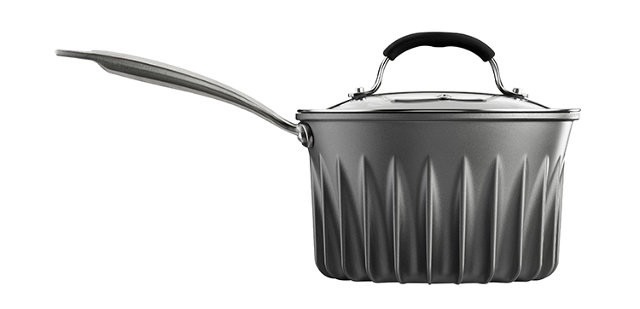
It took three years of research in the lab to create a design that people would actually want to buy. One early version improved efficiency by 100%, but looked so different that the manufacturer Povey partnered with said that it would never succeed, claiming it looked “great, but insane.”
The final set of products, which includes frying pans, a stockpot, and a saucepan, will be on sale through the U.K. cooking supplier Lakeland in August.
Of course, if you really want to save energy while you’re cooking, what you’re making for dinner matters more than what you’re using to make it. Beef, for example, is responsible for five times more greenhouse gas emissions than chicken, and a couple of hamburgers might use 12 or 13 times more energy than an hour of cooking the stove itself.
Intervention kills
Excellent article on over-servicing in healthcare.
Includes reference to this Berwick/JAMA article (PDF): Eliminating-Waste-in-US-Healthcare-Berwick
http://www.theguardian.com/commentisfree/2014/jul/19/patients-hospital-care-over-intervention
Too much intervention makes patients sicker
Aseem Malhotra

A few weeks ago my mum was admitted to hospital with a life-threatening pneumonia, induced by an immuno-suppressive medication she was taking for her rheumatoid arthritis. When the chest x-ray revealed infection in both lungs my father and I, both doctors, understood that her condition was serious. But we also knew that if anyone could fight this, it was one of the toughest and inspirational individuals, a woman who 10 years ago survived a brain haemorrhage.
But after several days into her stay, once the markers in her blood and oxygen levels started to improve, I was particularly concerned when she became uncharacteristically negative and tearful saying: “Just let me go. I’ve suffered enough.” Several days of eating unpalatable hospital food and sleeping poorly had started to have an adverse effect on her physical and psychological condition. Despite starting to recover from the acute cause of her admission she was now being put at risk of an affliction that affects thousands of hospitalised patients daily.
Writing in the New England Journal of Medicine last year, Dr Harlan Krumholz, professor of medicine at Yale, described a syndrome that starts to develop close to discharge from hospital. Physiological systems are impaired, reserves are depleted, and the body cannot effectively mitigate health threats. It is instructive to note that this syndrome – created by the stressful hospital environment – is a significant contributor to hospital re-admissions. It is estimated that 10-20% of patients discharged from hospital in the UK and US will be re-admitted within 30 days, often with a condition entirely unrelated to their original admission.
Poor sleep and inadequate nutrition have an adverse effect on physical performance and co-ordination, cognitive function, immunity, and even cardiac risk. The elderly are particularly vulnerable to being re-admitted with falls and infection, with one study revealing that a fifth of hospitalised patients over 65 had an average nutrient intake of less than 50% of their daily requirements.
Within days of feeding my mum home-cooked food, which we’d brought in, and asking the nurse to not wake her up in the night for unnecessary “routine” blood pressure checks, insisting that she didn’t need to be jagged with a needle for blood every day and getting her to wear her own clothes, my mum was smiling again and was able to regain enough strength to be discharged a week later.
A culture of over-investigation and over-treatment is now one of the greatest threats to western health. In the US it is estimated that a third of all healthcare activity brings no benefit to patients. Examples include excessive use of antibiotics, imaging for non-sinister headaches, use of surgery when watchful waiting is better and unwanted intensive care for patients at the end of life who would prefer hospice and home care. In the US, a fee-for-service model encourages high volume and expensive procedures. But we should be alert to similar possibilities here: the UK’s “payment by results” – which in reality is a payment-by-activity model – potentially incentivises “doing more” on the part of physicians.
As a profession we have also been guilty – unwittingly or otherwise – of exaggerating the benefits of medications often perceived as magic pills by patients when their benefits are often modest at best. This also detracts from more meaningful lifestyle interventions by giving the public the illusion of protection. One recent study revealed that those taking statins consumed considerably more food and ended up heavier after several years compared to those not taking statins. Our over-obsession with cholesterol-lowering by any means has become “the end in itself” says Rita Redberg, professor of cardiology at the University of California San Francisco: “Who cares about cholesterol lowering if it doesn’t benefit the patient?”
Even respected medical guideline panels appear to be influenced by corporate interests. The National Institute of Clinical Excellence has, in successive weeks, issued statements expanding the offer of weight-loss surgery to up to a million more obese patients with type 2 diabetes and suggested statins could be given to millions of healthy people.
At best, this is a contribution to over-medicalisation; at worst, this can seem like the behaviour of a sort of lobby group for the device and pharmaceutical industry. (On Friday Nice’s director of clinical practice, Mark Baker, said that allegations that eight of the 12 members of the guideline panel on statins had direct financial ties to the industry were unjustified.)
Political interference often worsens the situation. Jeremy Hunt’s recent criticism tainting all GPs for not referring patients early enough for cancer diagnosis is totally unjustified, fuelling more defensive medicine through encouraging over-investigation. This is the worst kind of medicine and goes against what I remember being taught in medical school – which was to treat patients according to clinical need.
But there’s a solution. In an effort to curb the unsustainable healthcare costs, estimated to reach a staggering $4.6trn by 2020, a campaign known as Choosing Wisely is gaining momentum in the US. Part of the campaign involves communicating with patients that more expensive medicine doesn’t necessarily mean better medicine. And this is reflected by the evidence that four fifths of new drugs are later found to be copies of old ones – not surprising perhaps when pharmaceutical companies spend twice as much on marketing new medications as on research.
We need a more informed decision-making process that gives greater empowerment to patients. Encouraging patients to ask specific questions will also help them understand that sometimes doing nothing is the best approach. Questions such as: do I really need this test or procedure? What are the risks? Are there simpler safer options? What happens if I do nothing? And even how much does it cost? The Academy Of Medical Royal Colleges – led by Professor Terence Stephenson – will report by the end of the year, its recommendations building on this theme. We may discover billions of NHS money that does not add value to patient care.
Reflecting on my mum’s care and how she should have been treated from the moment she entered hospital, I’m reminded of the words from the visionary American physician and social activist Hunter Adams: “When you treat a disease, sometimes you win and sometimes you lose. But I guarantee you, when you treat a person, whatever the outcome, you always win.” It’s time for real “whole person” care.
Aseem Malhotra is a cardiologist and consultant clinical associate to the Academy of Royal Medical Colleges
Happiness is someone to love, something to do, and something to hope for
Happiness is someone to love, something to do, and something to hope for – Chinese Proverb (from Forbes)
